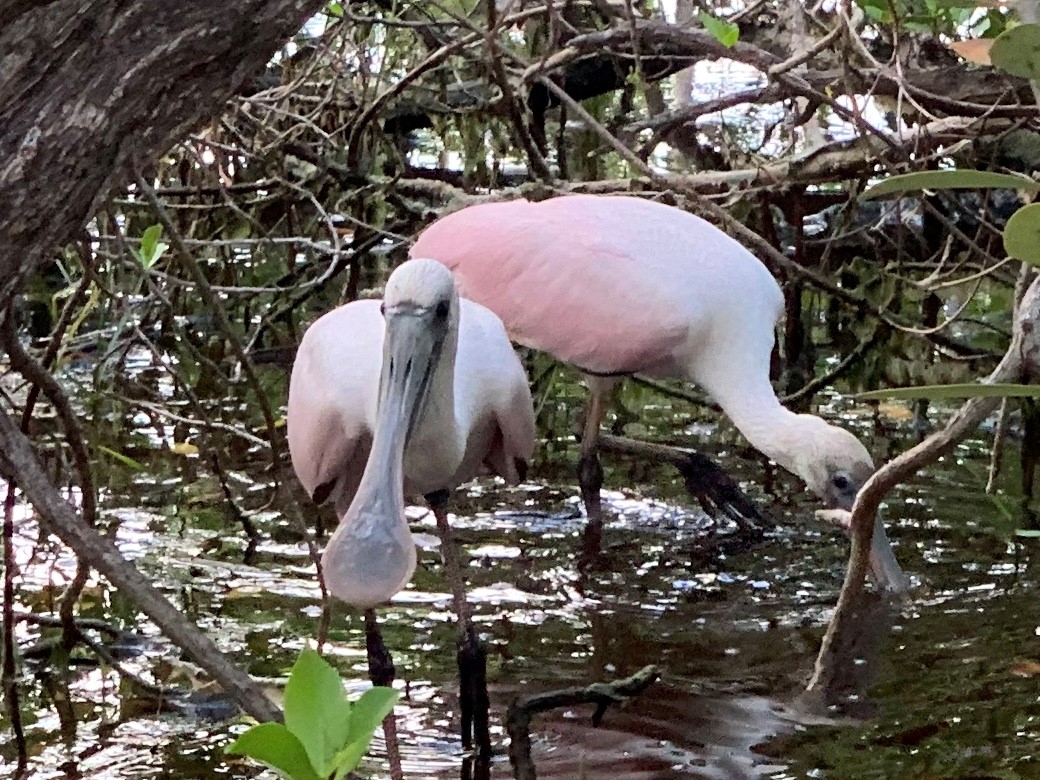Gorgeous at a distance and bizarre up close is the Roseate Spoonbill. Locally common in coastal Florida, Texas, and southwest Louisiana, they are usually found in small flocks, often associating with other waders. Spoonbills feed in shallow waters, walking forward slowly while they swing their heads from side to side, sifting the muck with their wide flat bills. They get their pink coloration from the foods they eat, which contain pigments called carotenoids that help turn their feathers pink.

This month our newsletter features a Professional Advisor Spotlight, a partnership with the Community Foundation to help a client achieve their goals. As always, the Community Foundation is here to help you and your clients navigate the various options for charitable giving.
It is our honor and pleasure to work with you and your clients.
As a financial advisor, what role do you play in your clients’ charitable giving?
As the title reads, our job as financial advisors is to determine our clients goals and give them direction on how best to achieve them. Because we deal with money, investments, taxes and donations on a regular basis, often we can gain perspective on best practices when it comes to fulfilling charitable desires. In some instances, the idea of leaving a legacy can be attractive way to have their assets live on beyond the client’s time.

Why did your client choose an endowment?
I recently had just such client pass away. This client had a clear direction in that he wanted the overwhelming bulk of his estate to go to charity. One of his main goals was to have his gifts live on indefinitely rather than go out in a lump sum and potentially be burned up quickly. An endowment was the perfect vehicle to fulfill the client’s wishes of leaving a lasting legacy. Most endowments are designed with a spending policy which dictates only “income” be gifted with principal staying intact, which is how this endowment was designed.
What reasons did your client choose the Community Foundation?
Creating the endowment is just one piece of the puzzle of creating a long-term plan. While some endowments are run by private boards, what happens when those board members turn over? What if the organization the endowment was created to support, ceases to exist? Community Foundations by their very nature are designed for the long haul. By design, Community Foundations should exist for generations and as custodians of an endowment are obligated to fulfill the wishes of the donor for hopefully, infinity.
The Community Foundation hosted a social networking event for Professional Advisors at the Waterfront Brewery in Key West in April. This very casual after work party gave the staff and board of the Foundation the opportunity to mingle with local financial and professional advisors. If you could not make it to April’s event, we hope you will be able to join us for the next event in the fall.


Clients who own closely held businesses, real estate, or even cryptocurrency may be good candidates for a particular type of charitable remainder trust known as a NIMCRUT, which is short for “Net Income with Makeup Charitable Remainder Unitrust.”
The way it works is that your client transfers a highly appreciated asset to a trust. The trust terms provide for the payment of a fixed percentage (at least 5%) of the trust’s value, revalued annually, to your client or another beneficiary.
Here’s the key with the NIMCRUT: The terms of this type of trust also provide that if the trust’s income is less than the designated fixed percentage, the trust will only distribute the actual income. Later, upon the liquidation of the highly appreciated asset, for example, the income distributions will be made up.
In this way, not only does the NIMCRUT keep the highly appreciated asset growing under favorable tax conditions inside the trust until it is sold, but it also allows your client to receive the higher income in later years, such as retirement, when the client’s tax bracket is likely to be lower. As with other types of charitable remainder trusts, when the term of the NIMCRUT expires, the remainder passes to charity.
Some NIMCRUTs deploy a “FlipCRUT” feature which removes the net income limitation upon a triggering event (such as the sale of an asset or a date). This creates even more flexibility in timing income for your client.
Note that it’s wise to consider naming a public charity, such as a donor-advised fund at the community foundation, versus a private foundation, as the charitable remainder beneficiary of a NIMCRUT or other charitable remainder trust. This optimizes the amount of your client’s up-front charitable deduction when the trust is funded.
The team at the community foundation is a resource and sounding board as you serve your philanthropic clients. We understand the charitable side of the equation and are happy to serve as a secondary source as you manage the primary relationship with your clients. This newsletter is provided for informational purposes only. It is not intended as legal, accounting, or financial planning advice.